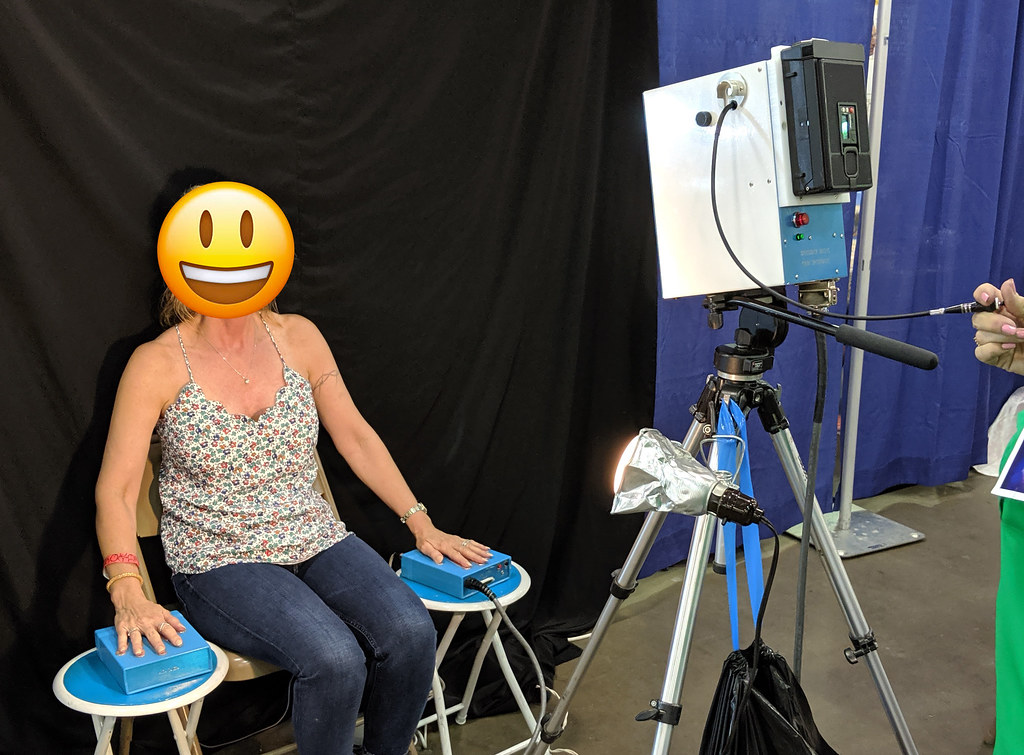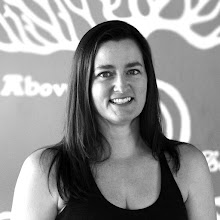The AuraCamera 6000 System
I love this quote by Arthur C. Clarke and it is especially fitting for this blog post.
"Any sufficiently advanced technology is indistinguishable from magic. -Arthur C. Clarke"
Knowing that auras are pseudoscientific in nature, and therefore not actually a real thing, I got curious about the inner workings of the AuraCamera 6000 System, what methods it used to flood the portraits with colored light and how much money did this setup cost. I've seen Polaroid EE100 Special cameras sell for as little as $10 on Ebay and I started to wonder what kind of Hackaday.io project could be launched to crowdsource a DIY version of the AuraCamera 6000 System. But I digress...
The website that has the AuraPhoto 6000 System for sale doesn't have a lot of technical information on how the camera photographs a person's aura, but I think their initial disclaimer is pretty clear: "This page is written according to people’s belief in metaphysics." Read: The rest of what you read here will assume you believe in auras and pseudoscience. The technical information they do include is limited to this:
"...measures readings from a hands sensor and exposes those readings as an aura representation to film instant film photograph."
"Our aura reading machine uses a hand sensor, as seen to the image to the right. A person would put their left (or right) hand onto the hand sensors. This, in turn, would allow a particular product to measure physiological parameters. The hand sensor itself has various contact points on them designed to maximize reading accuracy. The hand sensor is also sensitive to deviations in temperature, humidity, and static electricity in the environment and the person..."
"These data parameters are then projected as a radiant, colored aura field around the body"
"In short, these kinds of technology can measure physical readings from a person’s hand. The aura camera or video device can then display this information as a colorful field around your body. The colors represent our interpretation of your spiritual and auric state."
In short, the temperature, moisture level or static electricity level of the subjects hands, or the room are the measurements used to generate a given color or colors which are then electronically fed to the camera by the camera control board. It is my assumption that a series of LED lights generate the colors that show up on the person's portrait, but I cannot say for certain, as I haven't disassembled an AuraPhoto 6000 System Camera. What I can say is that there is nothing supernatural about a camera that uses skin capacitance as input data to generate a colored output on Fuji Type 100c instant film. Fun fact: capacitive sensing is what makes all of our smart phones, tablets and touch screens detect our finger as a source of input.
I emailed AuraPhoto to inquire about the cost of an AuraPhoto 6000 System. They replied back with this screen capture which shows the list price of the Aura Camera as $15,698. I was told via email that the hand sensors measure "bio feedback items are heartbeat, temperature, measuring the galvanic skin response in the electoral dermal layer. Other proprietary measurements are used that are not shared." (There is no such thing as an 'electoral' dermal layer. Human skin has three layers: epidermis, dermis and subcutaneous).
Setting aside the fact that auras (colors emanating from/surrounding human beings) don't exist and as a result, can't be photographed let's focus on the cost of this camera, the film (it's not cheap) and how long it would take to turn a profit if one were to "invest" in this popular trickery. Handily, AuraPhoto has an Aura Camera Profitability Guide where the cost of each picture is set at $25. They list the cost of piece of film in the film pack as $1.30 which is basically a quarter of what the film costs nowadays.
Fuji is no longer making the FP-100C color peel-apart instant film as of 2016, and stock is limited where you can find it, and prices are climbing. The average cost of film is $48 for a pack of 10 exposures. Each photo costs $4.80 in film alone. The only way to get fresh Type 100C film is to have backed the One Instant Kickstarter which is pricing a 6 pack of film at a staggering $62.55 per pack (that's $10.42 per photo for those keeping track at home). Heaven knows how much it will cost when the product is launched outside of Kickstarter (if that ever happens).
Let's look at the Return On Investment (ROI) calculations on the AuraCamera 6000, using outdated Fuji Type100C film, just for giggles. AuraPhoto's profitability guide looks pretty good until you start factoring in the cost of the camera, expo booth rental and electricity fees, not to mention airfare, hotel and other travel costs. Let's leave out the travel costs and focus on the booth, electricity, camera and film costs to keep it simple.
You'd need to take/sell 450 photographs priced at $35 each, not including the cost of the film ($4.80 a photograph) to pay for the camera. To achieve a break even cost on the camera, one would have to purchase $2,152 in film. That's another 61 aura portraits to pay for the film. Now let's take into consideration the cost of the booth at the Expo fair.
- Booth Rental $650.00
- Electricity hookup for booth (directional lighting needed on photo subjects) $100
- $35 per photo
- Pictures need to take = 19
- Cost of film to take 19 pictures = $89
The AuraCamera 6000 System won't turn a profit until the photographer passes the ~500 photo mark, and even then, the cost of traveling to the expo(s) and repeated booth rental costs keep moving the needle on profitability of the camera system. The only place I can think of where having an AuraCamera 6000 System could pay for itself fairly quickly would be the lobby of the Cassadega Hotel. Captive audience, high probability of target demographic foot traffic (believers in paranormal/pseudoscience).
I'm not the first person to write about what a sham the AuraCamera 6000 is. In the manufacturer's own words, the camera doesn't actually photograph a person's aura (which isn't even possible because it doesn't exist). I'm choosing instead to address the steep cost of the unit and the uphill battle to achieve a return on one's investment, given that the camera costs nearly $16K and film is starting to cost $5 a print (if you can find deadstock Fuji Type 100C) and may soon cost $10 per photo for One Instant film.
Does this mean that the next time you have an aura portrait taken, the cost will increase to $45 or $50 (to keep the photographer in the black)? Will anyone pay that price? Could we soon find AuraCamera 6000 Systems turning up on eBay? My guess is yes, because we've seen projects like this pop up in recent years. Another question I keep asking myself is - does the photographer believe they're actually photographing a person's aura, or are they telling themselves that they're taking part in a harmless, capatalistic business venture?
If you're still hungry for more scientific studies into auras, many people have already written about that here, here and here.












9 comments
Write commentsI disagree with Jennifer and find this to be a fantastic camera and a great overall experience, you can see my Aura Photo (via the AuraCamera 6000) via MikhailTank.com
Reply(Had it taken by Madame Fujita on Post)
The Polaroid EE100 Special camera is indeed a fantastic camera. What is not fantastic is someone charging you $25 or more to have your "aura" photographed with lighting trickery hidden inside the AuraCamera 6000 housing shroud for the Polaroid EE100 camera. Auras are not a real thing that can be photographed. They are pseudoscience. What you have here is a Polaroid portrait with some lighting effects created in the camera shroud housing. That is all. https://www.mikhailtank.com/yahoo_site_admin/assets/images/IMG_7413_4.332203648_std.jpg
ReplyHave you not looked into kirlian photography? Yes the aura can be photographed. I've had mine done by several different people and obviously different cameras and my aura has the same shape and structure each time. Very different from whoever I go along with at the time. So I know it's legit and not trickery.
ReplyAuro analysis is good
ReplyHello, I am copying the answer of this engineer that helped guy coggings make the camera. And I am with him. Everyone knows is an artificial light, but it is based on studies to help find some universality of how aura works since they are eletromagnetic fields not only a cute magical unknown mystery. HERE IS HIS REPLY!!!
Reply"I've worked with Guy Coggins back in the 2000's out of his office in Redwood City, CA. I was not involved with the readings but I did some engineering R&D for him. The way the picture is made is through a double exposure on polaroid film. The hand plate mainly reads GSR (Galvanic Skin Response) and inside the camera box lights up bulbs with the colors based on your bio-readings. The operator takes a regular picture of you then flips the mirror to do the double expose with the lights... so the aura you see is artificially produced, but it is based on how people that do aura readings actually see them around people; so it's not completely fake (in case you worried) It took many years of research to get the colors and the readings to match up and of course there's a digital version of this camera as well. Today Guy is retired and someone else is running the business"
That's really interesting because I've had several aura photos taken over the last 20 years or so and oddly they all have exactly the same shape and form but different colours. I've been with other people at the time and there photos were a completely different shape/form than mine.
ReplyThe concept of aura comes from the Eastern philosophies and teachings. The author of this blog is involved in yoga that comes from the same roots and philosophy, so her resolute claim that aura doesn't exist is interesting to say it mildly. In my eyes this diminishes her "yoga" enthusiasm to a mere exercise in the gym. Why do you practice yoga then? Run on a treadmill...
ReplyI owned an aura camera and dumped the eprom from the control computer(8051). The plan was to port it to the Arduino platform, but something always came up. If anyone is interested in the dump ... womax (at) gmx (dot) ch
Reply